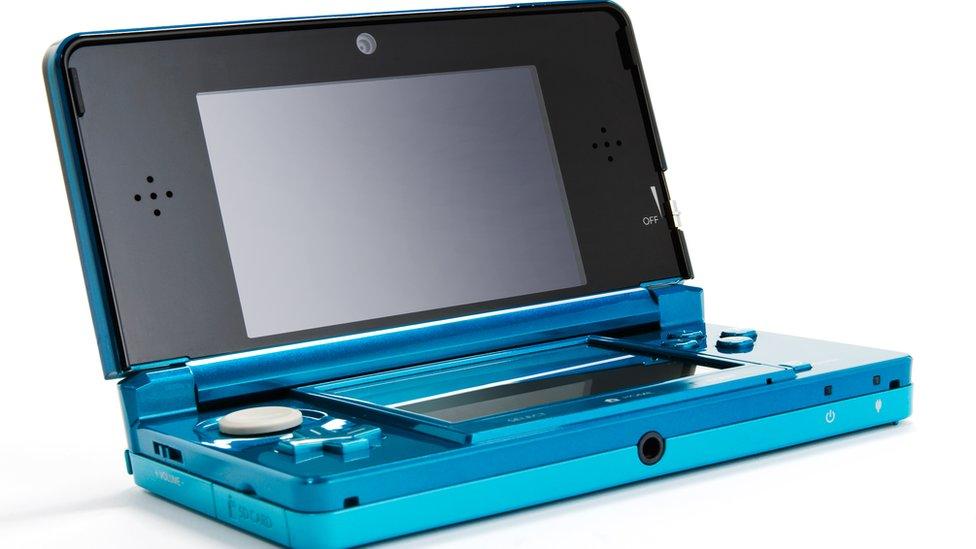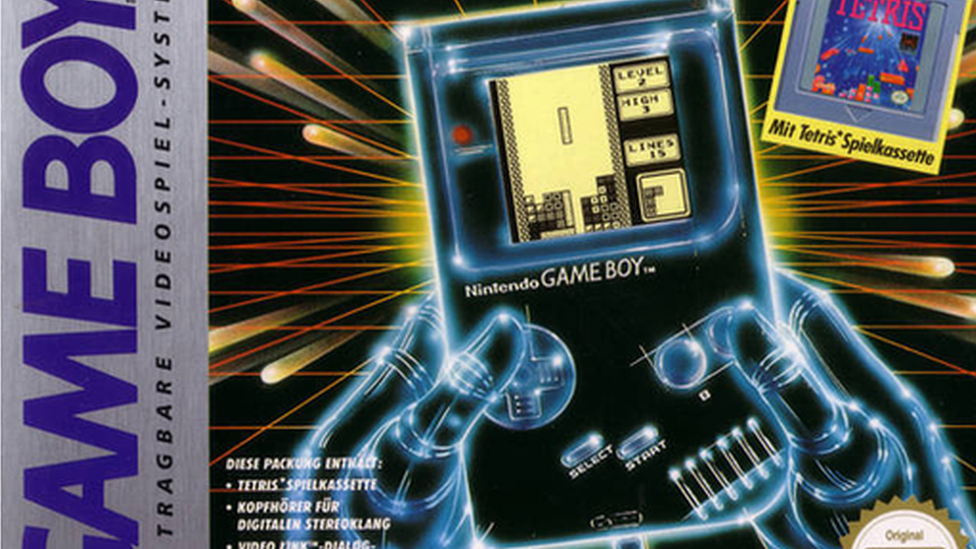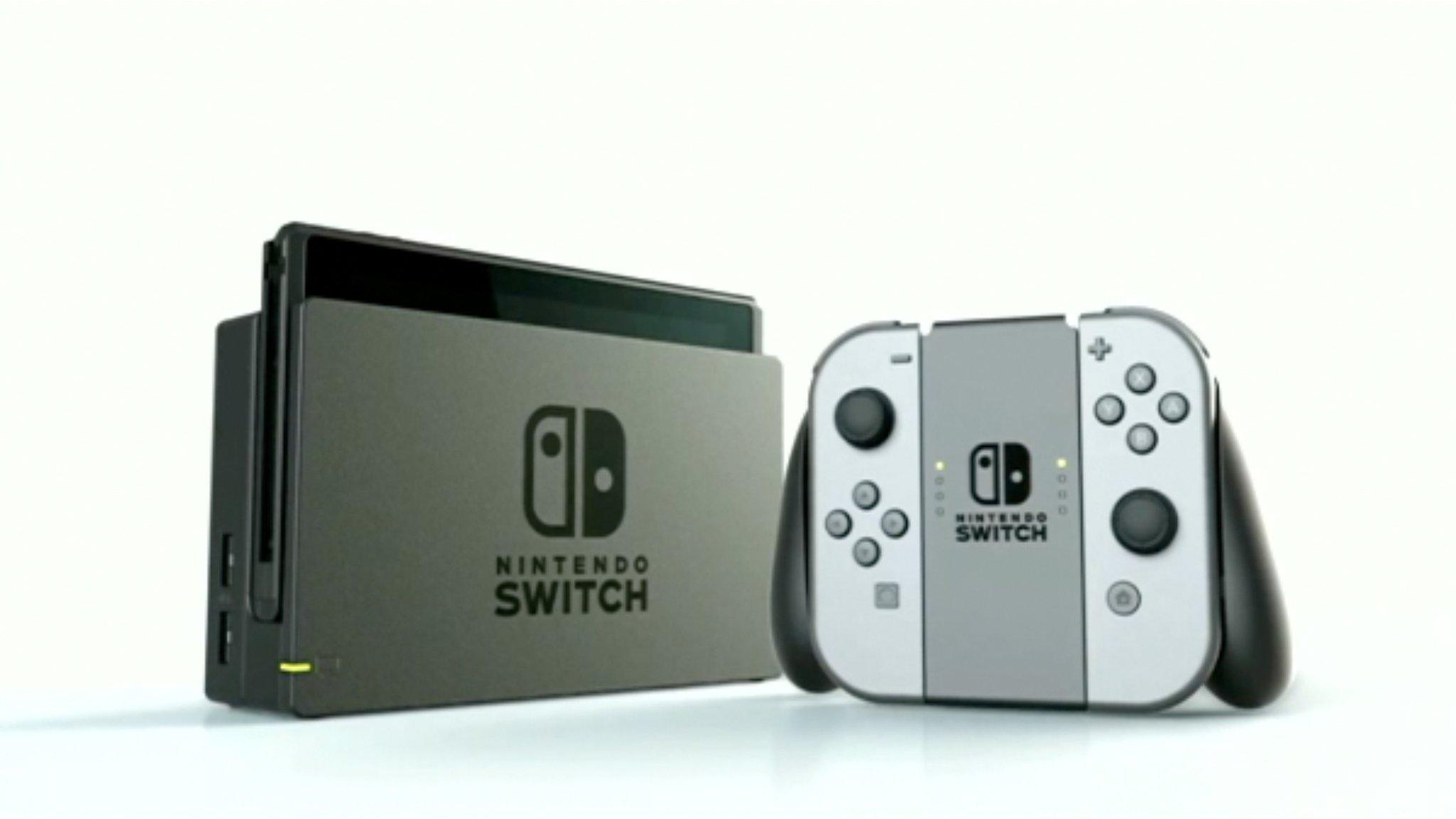Nintendo 3DS discontinued after almost a decade
- Published

Launched in early 2011, the 3DS went through several redesigns
Nintendo has discontinued its 3DS handheld after about 76 million sales over a nine-and-a-half year period.
A notice on the Japanese firm's site says "manufacturing of the Nintendo 3DS family of systems has ended".
The device had the ability to trick the human eye into seeing 3D images like those in some cinema screenings - but without special glasses.
However, its launch received a lukewarm reception and it only gained popularity later.
The console's demise has long been expected. Last year, the company said it no longer planned to make any new first-party games for the system.
It means the original Nintendo DS retains the title of being the bestselling mobile console.
And the Nintendo Switch - a hybrid handheld-and-home machine - is the current focus of Nintendo's efforts.
Glasses-free 3D
The unique selling point of the 3DS was its stereoscopic 3D effect coming from the screen itself, turned on with a simple slider.
The optical illusion only works when the screen is in a very specific spot in front of the face - but exactly where gamers tend to hold handheld consoles.
It was impossible to showcase on video or photo but impressed many who tried it.

In its 2011 review, game site IGN wrote, external: "Once you're in the 3D sweet spot... the 3DS looks amazing; graphics look clean, characters and objects are sharp, and ghosting effects are limited, creating a rich, immersive gameplay experience unlike anything we've seen on a handheld before."
The console was packed with experimental features - augmented reality games, dual 3D cameras, and the the ability to detect nearby consoles while in low-power standby, called "Streetpass" - which allowed players to connect with strangers without exchanging any information.

"The 3DS and its StreetPass functionality were driving factors for the founding of many of the groups now found in [Nintendo Players UK]," said player John Edwards. "Without the 3DS I doubt we'd have such a thriving community."
Slow starter
Despite all the bells and whistles, the 3DS did not start well. A high asking price for the time of over £200, coupled with a lacklustre list of initial games, hurt sales. The fact that the key feature of 3D had to be tried in person was another obstacle.
On top of that, some users reported that the 3D effect made them feel sick. Nintendo even advises to this day that children under six should not use the facility, external as it could cause vision damage.
Within six months of the launch, Nintendo announced a major price cut to between £100 and £150. Coupled with more games - including a beloved remake of the classic Ocarina of Time - the fortunes of the handheld started to change.

In 2012, a new version with a larger screen was launched, and Nintendo debuted digital downloads of games for the first time. That online store allowed Nintendo to re-release many of its best-loved classics on the handheld.
"It became a fantastic Nintendo machine for legacy content," recalls games writer Nathan Ellingsworth.
"It was how I experienced Majora's Mask, Earthbound, Minish Cap and many more for the first time and it had its own steady stream of incredible titles."
Making the switch
The 3DS quickly came into its own, with dedicated Mario titles and new Pokemon games in addition to its growing back catalogue.
It was revamped and relaunched several times - on top of the "XL" models, the "New 3DS" had increased horsepower, while the 2DS dropped the standout 3D feature entirely for those who saw it as a gimmick.
By June 2020, the entire system family had sold nearly 76 million units, Nintendo says - far outclassing its home console of the same era, the WiiU, which sold less than 14 million.

The higher-resolution, more powerful Switch has largely taken the place of the 3DS
But the modern Nintendo Switch, released in 2017, has already sold more than 60 million units, and can be played as a handheld.
While Nintendo initially insisted it was not a "replacement" for the 3DS, declining support and sales meant the venerable handheld's time was limited. In the year to March 2020, only 69,000 3DS consoles were sold.
- Published30 January 2020

- Published13 January 2017

- Published21 April 2020

- Published6 August 2020

- Published30 July 2014

- Published13 January 2017
